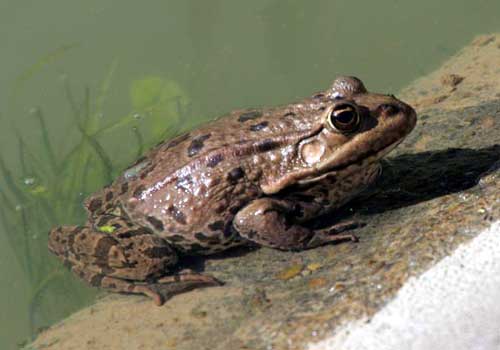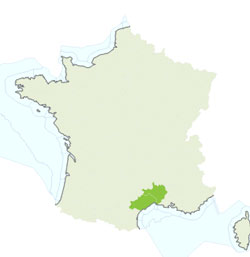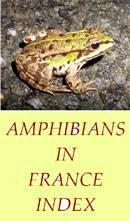
Pelophylax kl. grafi was Rana kl. grafi
Graf's frog
Graf’s frog has one set of chromosomes from Rana ridibunda (Marsh frog) and one set of chromosomes from Rana perezi (Perez's frog). Graf’s frogs will couple with each other and with Perez’s frogs. Only the coupling with Perez’s frogs produces a Graf’s frog. Prior to meiosis the Graf’s frog often eliminates one set of Perez’s frog genes and conserves one set of Marsh frogs genes. It is considered that the origin of this klepton goes back to a hybridisation between the Edible frog, (Rana.kl.esculenta), and Perez’s frog, (Rana perezi), and not between the Marsh frog, (Rana ridibunda), and Perez’s frog, (Rana perezi).
Rana.kl.esculenta produces gamates from the ridibunda genome.
Caution. The above information may be out of date due to advanced genetic studies.
As a result of the morphology, the Graf’s frog is very dificult to distinguish from the two species whose chromosomes it carries, (Perezi and Ridibunda).
It is a medium size frog, normally 6.5 to 8cm with a maximum of 12cm with a generally slim appearance and a rounded nose when viewed in profile. Oval horizontal pupils. Iris a mixture of black and gold. The skin on its back is warty in varying degrees. It is brownish / greenish with a spotted or marbled look with lateral pleats. The belly is yellowish white, again spotted / marbled.


Logically it is found in France in the same regions as Perez’s frog with which it has to co-habit in order to reproduce. It occupies a vast range of aquatic habitats, coastal wetlands, irrigation canals, drainage ditches, ponds and rivers. Slightly saline and brackish waters are tolerated.
Prey is mainly insects, spiders and worms. Occassionaly small fish and other frogs will be taken.
Adults spend all the year either in the water or in close proximity. Reproduction takes place from March until May when females produce 1000 to 10000 eggs. Tadpoles take 2 to 4 months to achieve metamorphosis
Protection. Berne convention. Annexe 3. National protection. Amphibians and Reptiles Article 3.




